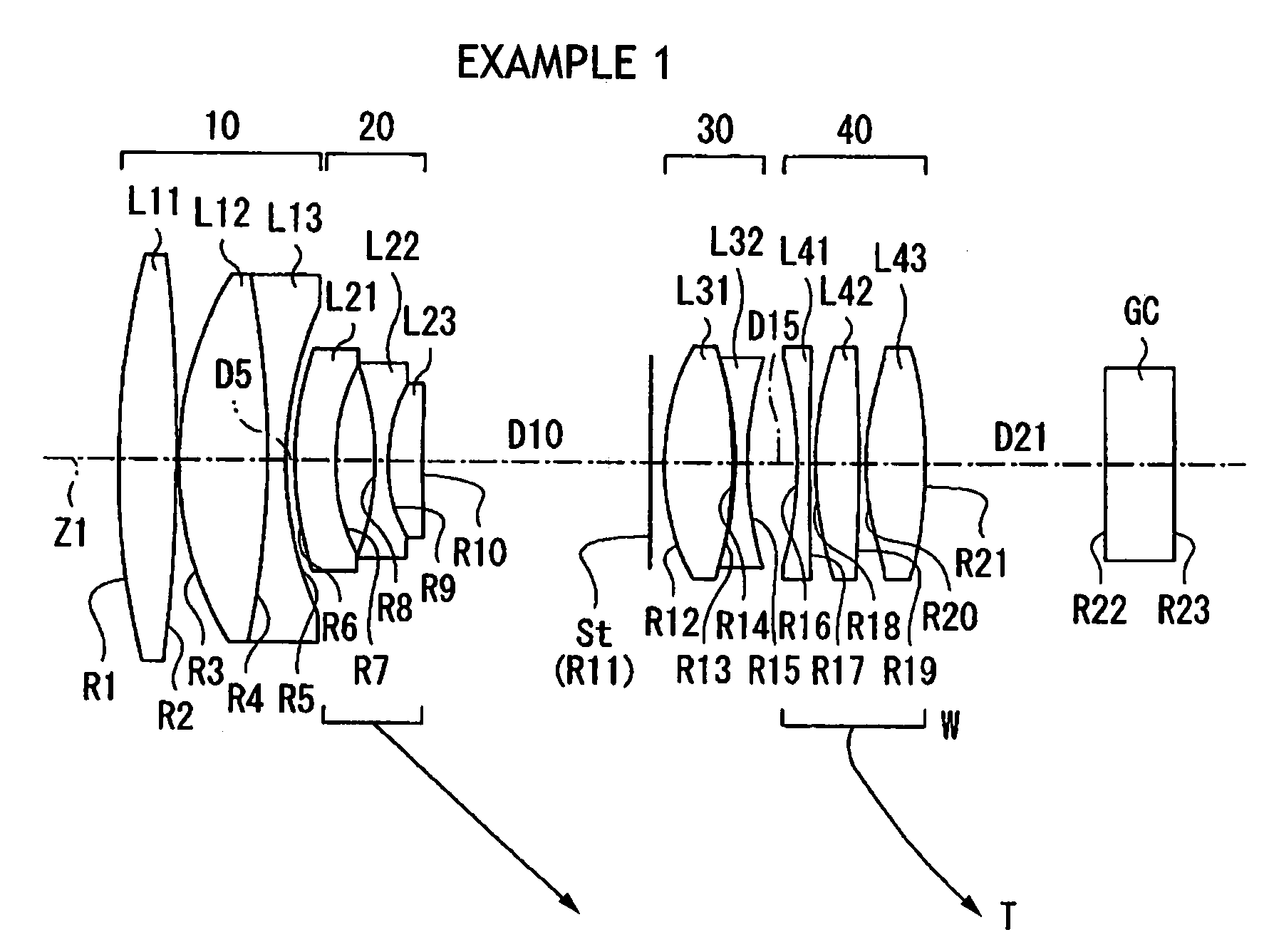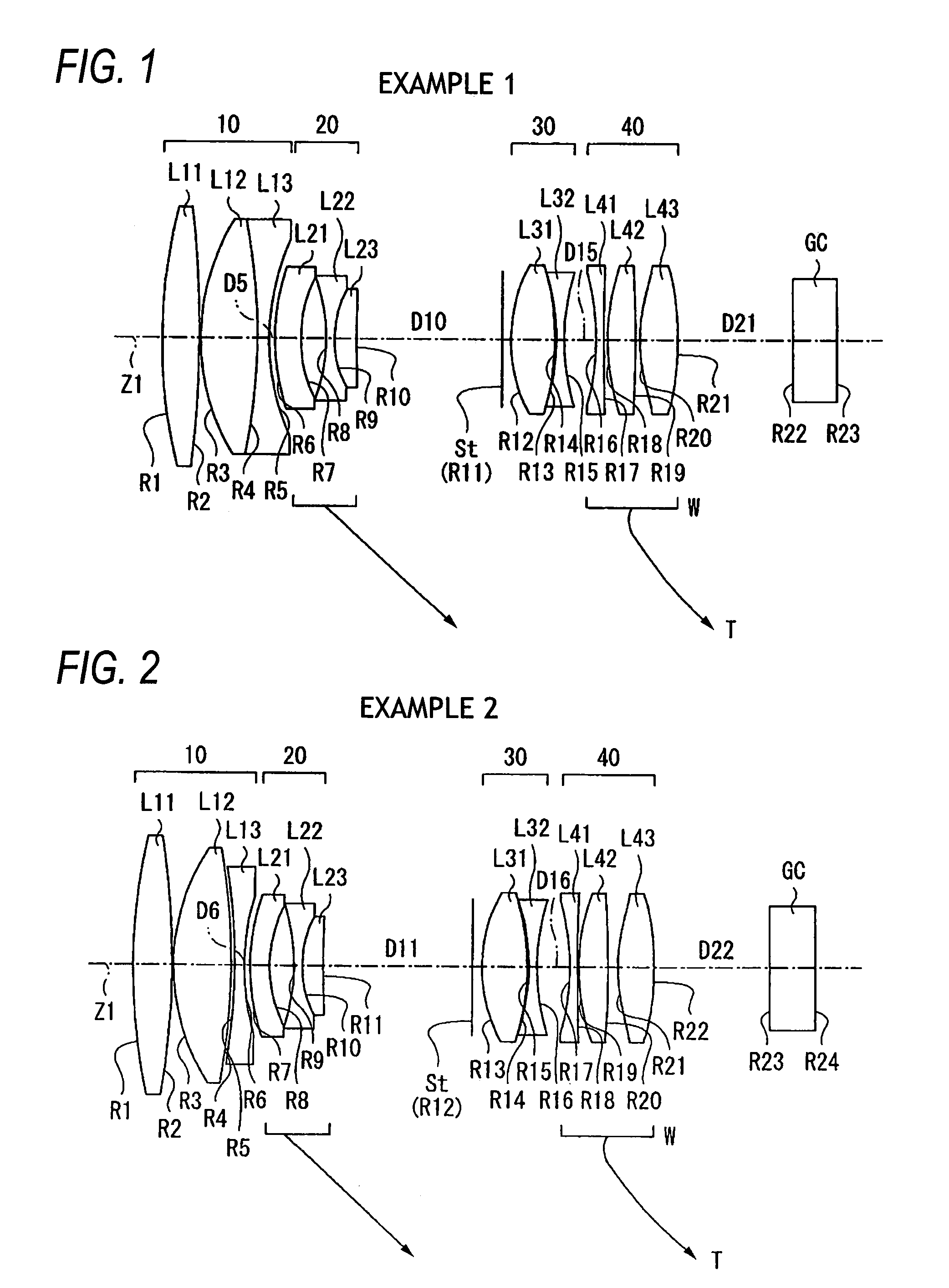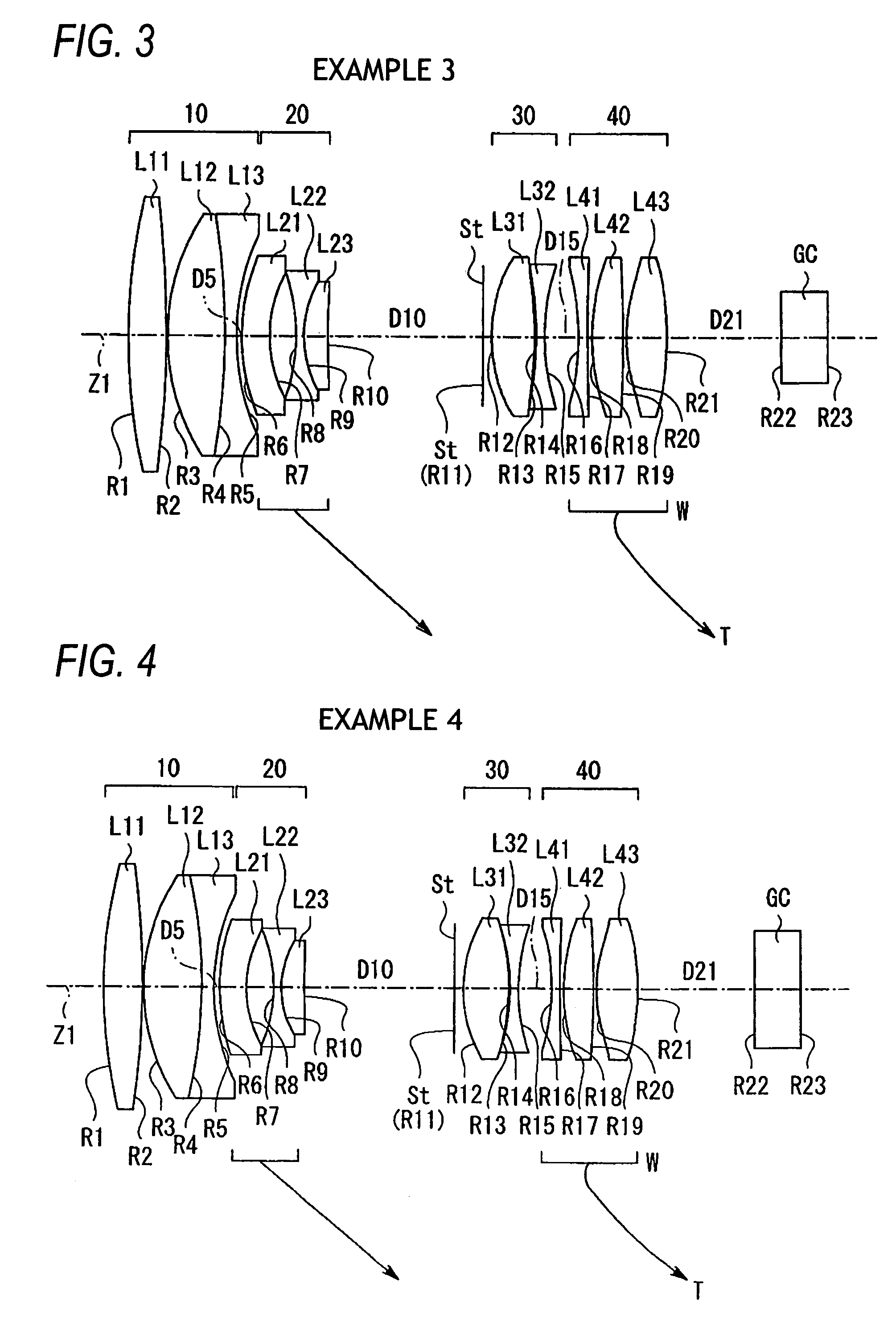Zoom lens
a zoom lens and zoom technology, applied in the field of zoom lenses, can solve the problems of severe demand for miniaturization of the optical system, and the difficulty of reducing the size of the optical system required for telephoto use, and achieve the effect of small size and high performan
- Summary
- Abstract
- Description
- Claims
- Application Information
AI Technical Summary
Benefits of technology
Problems solved by technology
Method used
Image
Examples
example
[0083]Specific numerical examples 1 to 8 of the zoom lens according to the embodiment will be collectively described based on the example 1.
[0084]FIGS. 9, 10(A) and 10(B) show, as an example 1, specific lens data corresponding to the lens configuration shown in FIG. 1. FIG. 9 shows the basic lens data, FIG. 10(A) shows data relating to aspheric surfaces, and FIG. 10(B) shows data which change along with zooming.
[0085]The column of surface number Si of FIG. 9 shows numbers of i-th (i=1 to 23) surfaces to which references are given with gradually increasing as approaching to the image side, and the surface of the constituent element closest to the object side is taken as a first surface. The column of curvature radius Ri shows values of curvature radius (mm) of each i-th surface as counted in order from the object side, correspondingly to the symbols Ri shown in FIG. 1. The column of distance between surfaces Di shows a distance (mm) on the optical axis between the i-th surface Si and...
PUM
 Login to View More
Login to View More Abstract
Description
Claims
Application Information
 Login to View More
Login to View More - R&D
- Intellectual Property
- Life Sciences
- Materials
- Tech Scout
- Unparalleled Data Quality
- Higher Quality Content
- 60% Fewer Hallucinations
Browse by: Latest US Patents, China's latest patents, Technical Efficacy Thesaurus, Application Domain, Technology Topic, Popular Technical Reports.
© 2025 PatSnap. All rights reserved.Legal|Privacy policy|Modern Slavery Act Transparency Statement|Sitemap|About US| Contact US: help@patsnap.com



